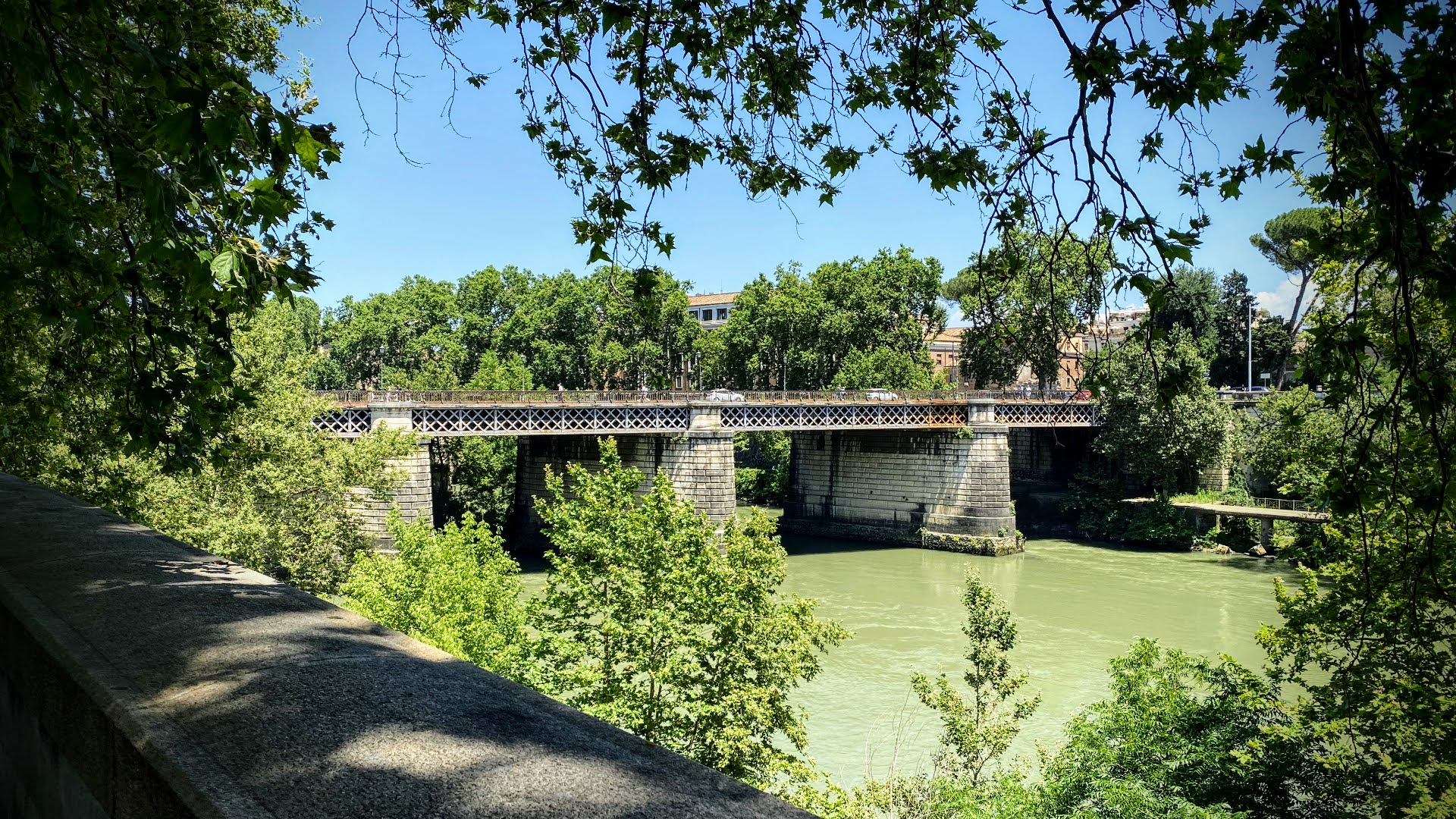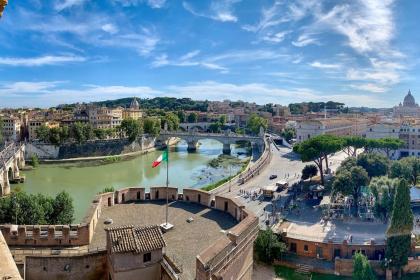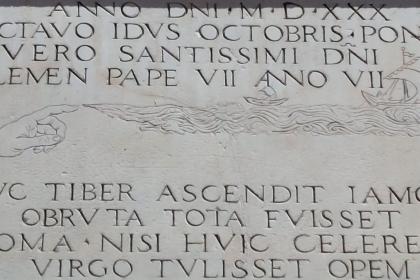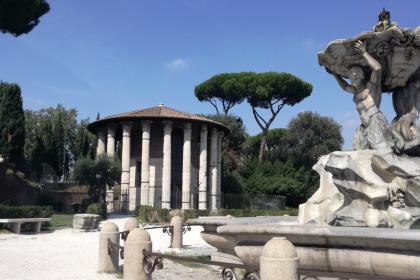
Au cours de la seconde moitié du XIXe siècle se fait sentir le besoin urgent d'un pont qui puisse desservir les zones autrefois reliées par l'ancien Pont Emilio (Pont rompu), dont les vestiges subsistent encore aujourd'hui comme gardiens millénaires d'une histoire mouvementée faite d'innombrables effondrements et reconstructions.
Le Pont Palatino a donc été construit entre 1886 et 1890 sur un projet de l'ingénieur Angelo Vescovali, en collaboration avec une entreprise belge spécialisée dans les ponts en fer et avec l'aide de l'Officina dell'Impresa Industriale Italiana, qui s'est occupée des parties métalliques.
Sa structure est essentielle, sans les arcs imposants qui caractérisent la plupart des ponts de Rome, et dépourvue de grandes décorations, si ce n'est la grille métallique qui relie les différentes sections avec d'élégants éléments en forme de losange. Plus que l'esthétique, c'est donc l'aspect pratique qui l'a emporté : le Pont Palatino est en effet l'un des premiers exemples d'architecture fonctionnelle de la ville et la démonstration d'un grand savoir-faire en matière d'ingénierie à un endroit du fleuve où même le génie des anciens Romains avait échoué à maintes reprises.
D'une longueur d'un peu plus de 155 mètres et d'une largeur d'environ 19 mètres, le pont relie le Lungotevere Ripa au Lungotevere Aventino, dans les rioni Ripa et Trastevere. Il est constitué de cinq travées entrecoupées de quatre piliers massifs en maçonnerie recouverts de pierres de taille en travertin supportant une passerelle métallique qui s'insère, à chaque extrémité, dans les murs gigantesques érigés après l'impressionnante inondation de 1870 pour protéger Rome de futures submersions.
Sur le côté gauche du pont, au niveau du Lungotevere Aventino, se trouve le Cloaca Maxima, le plus grand complexe d'égouts de l'époque romaine, qui, partant de la Suburra, s'écoulait à proximité.
Une vieille coutume romaine (heureusement disparue aujourd'hui) lie sa mémoire au pont : la « partita a rocci » ou « sassaiola », le lancer de pierres en rafale qui voyait s'affronter les habitants des rioni Testaccio et Trastevere, qui avaient choisi le Pont Palatino pour leurs défis. D'autres jets de pierres font rage sur le Pont Saint-Ange entre les Borghiciani, habitants du rione Borgo, et les Ponticiani, habitants du rione Ponte, ou au Campo Vaccino, où s'affrontent les rioni du Trastevere et des Monti.
Curiosité : le Pont Palatino est également connu sous le nom de « pont anglais » ou « pont des Anglais » en raison du sens de circulation inversé par rapport au sens de trafic normal sur les routes et les ponts de Rome.
Photo turismoroma
Passage sur le Tibre : à la découverte des sept ponts les plus emblématiques de Rome

Un itinerario tra architetture millenarie e ardite visioni contemporanee
 Condividi
Condividi
Les plaques commemoratives des inondations

Forum Boarium

 Condividi
Condividi
Informations
 Condividi
Condividi
Location
Pour connaître tous les services d'accessibilité, visitez la section Rome accessible.











































